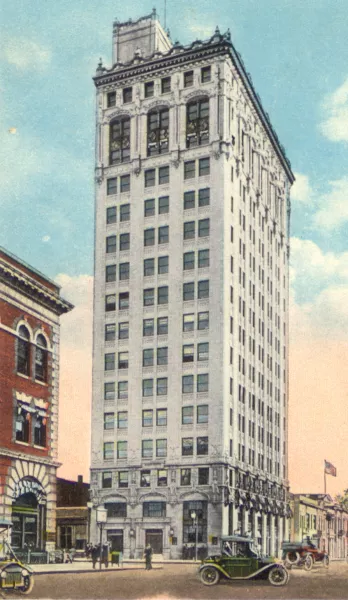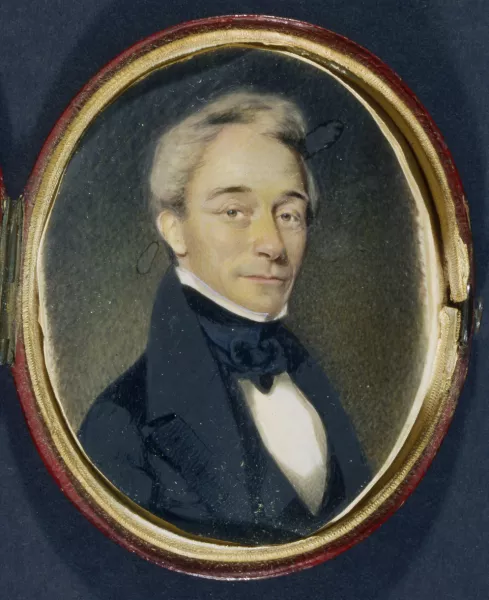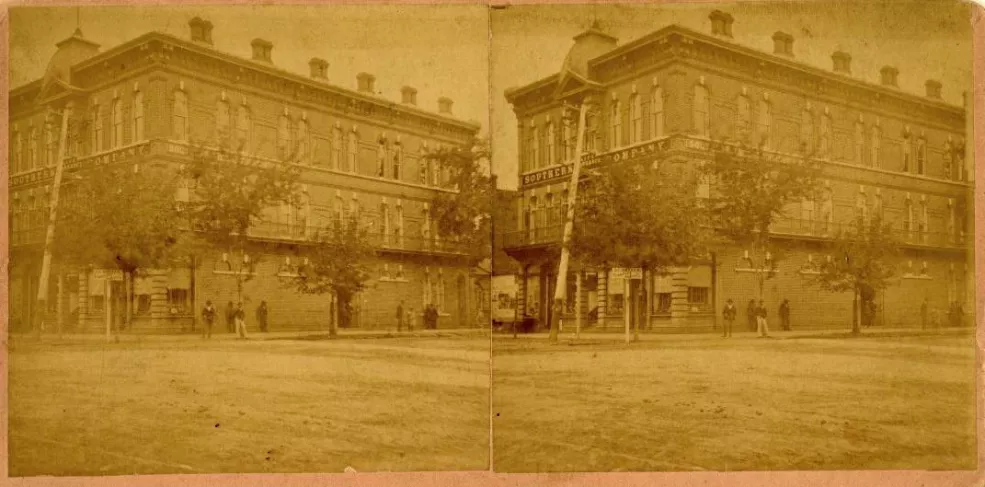1400 Main Street
Palmetto Building
Julius Harder of the New York architectural firm of Israels and Harder designed Columbia’s third skyscraper for the Palmetto National Bank. Its construction was overseen by the local architectural firm of Wilson & Sompayrac. John J. Cain, a local contractor, received the contract in February 1912 to build the 15-story building on the northeast corner of Main and Washington streets. Its composition of steel, concrete, tile and wire-glass windows and metal window casing was championed at the time as being fireproof. Interestingly, promoters also emphasized the structure’s three, fast elevators as being life-saving devices in the event of fire (something that runs totally opposite to today's instructions of not using elevators during a fire!) Like those of Columbia’s two other early skyscrapers, this building’s form reflects the characteristics of a column. Two floors of Indiana limestone comprise the base. Ten floors are clad in glazed, cream-colored terra cotta. Meanwhile, the capital, which is made of the top five floors, features interlaced Italian Gothic arches. An ornate, over-hanging copper cornice and a stone parapet top the building. Motifs of plant life indigenous to the South embellish the building. Though a unique and thriving downtown destination today, in 1980, this landmark was considered for demolition. Luckily, historic preservationists ensured the unique structure remained for future generations to use and enjoy.
Site of Richland Lodge No. 39
Camden native Chapman Levy (1787-1849) was the first recorded Worshipful Master of Richland Lodge No. 39, a masonic order believed to have been originally housed in the Law Range erected in 1822. Admitted to the bar in 1806, Levy also served as a captain during the War of 1812 and as a state legislator for Kershaw County during multiple terms from 1812 until 1832. During the early 1820s he operated a brickyard near the Columbia Canal where 20 of his 31 enslaved laborers worked. He enjoyed a statewide reputation as an authority in dueling protocol and once unsuccessfully prosecuted Governor John Taylor’s brother for murder. He left South Carolina in 1838 to form a law partnership in Mississippi with William McWillie, a future governor. The law range, destroyed during the Burning of Columbia on February 17-18, 1865, was replaced by a three-story, Reconstruction-era building known as the Southern Life Insurance building. That structure was demolished to in preparation for the Palmetto Building's construction in 1913.
A Landmark Lost and a Landmark Gained
Development of the Palmetto building destroyed a three-story Reconstruction-era structure known as the Southern Life Insurance building, known at that time as “Smith’s.” Erected sometime between 1872 (when Camille Drie drew his map of Columbia) and 1874/76 (when photographer W.A. Reckling made a stereographic view of the property), this commercial building had many, diverse, tenants. One was W.A. Clark, a former Confederate officer, who operated a “splendid” dance hall on its third floor. “Clarks Hall,” was a popular spot for all kinds of cotillions, masquerade balls, parties, and art exhibitions, where the Columbia orchestra often performed. Additionally, it served as the former location for the Governor’s Guards armory. Clubs, such as the Columbia Wheelmen, maintained rooms in the building where they “revel[ed] in cycling matters.” On some occasions, Clark’s Hall hosted boxing matches where African American athletes like Columbia’s Shedney Prince fought out-of-town contenders in the 1890s


